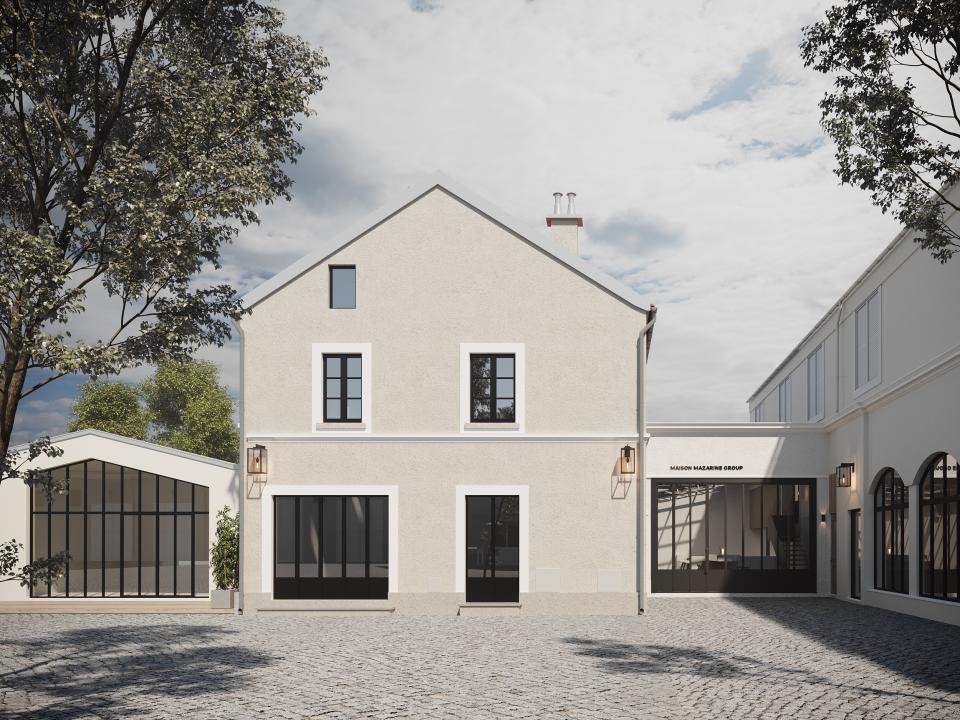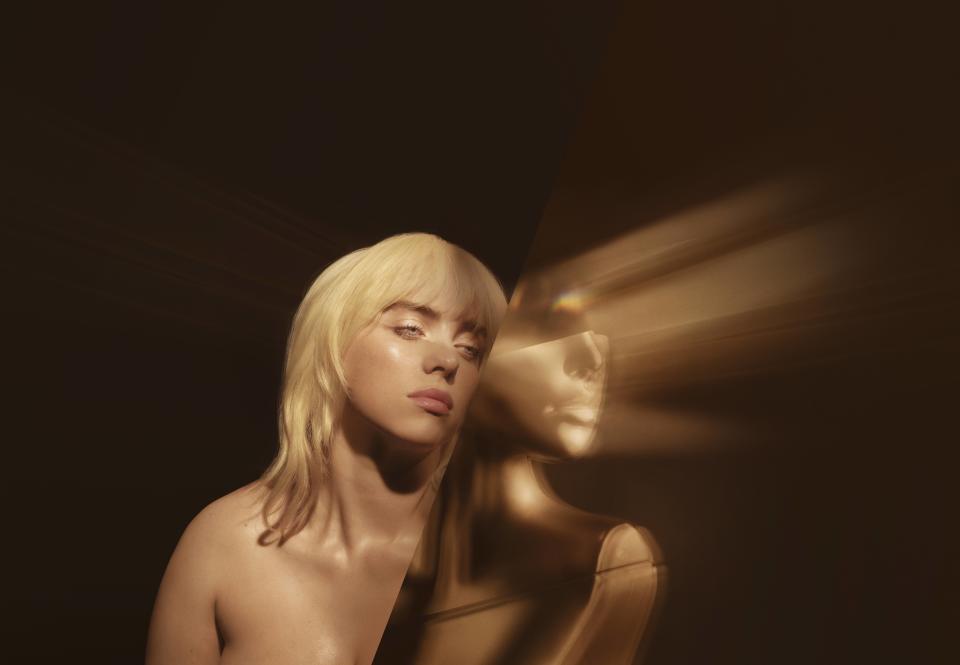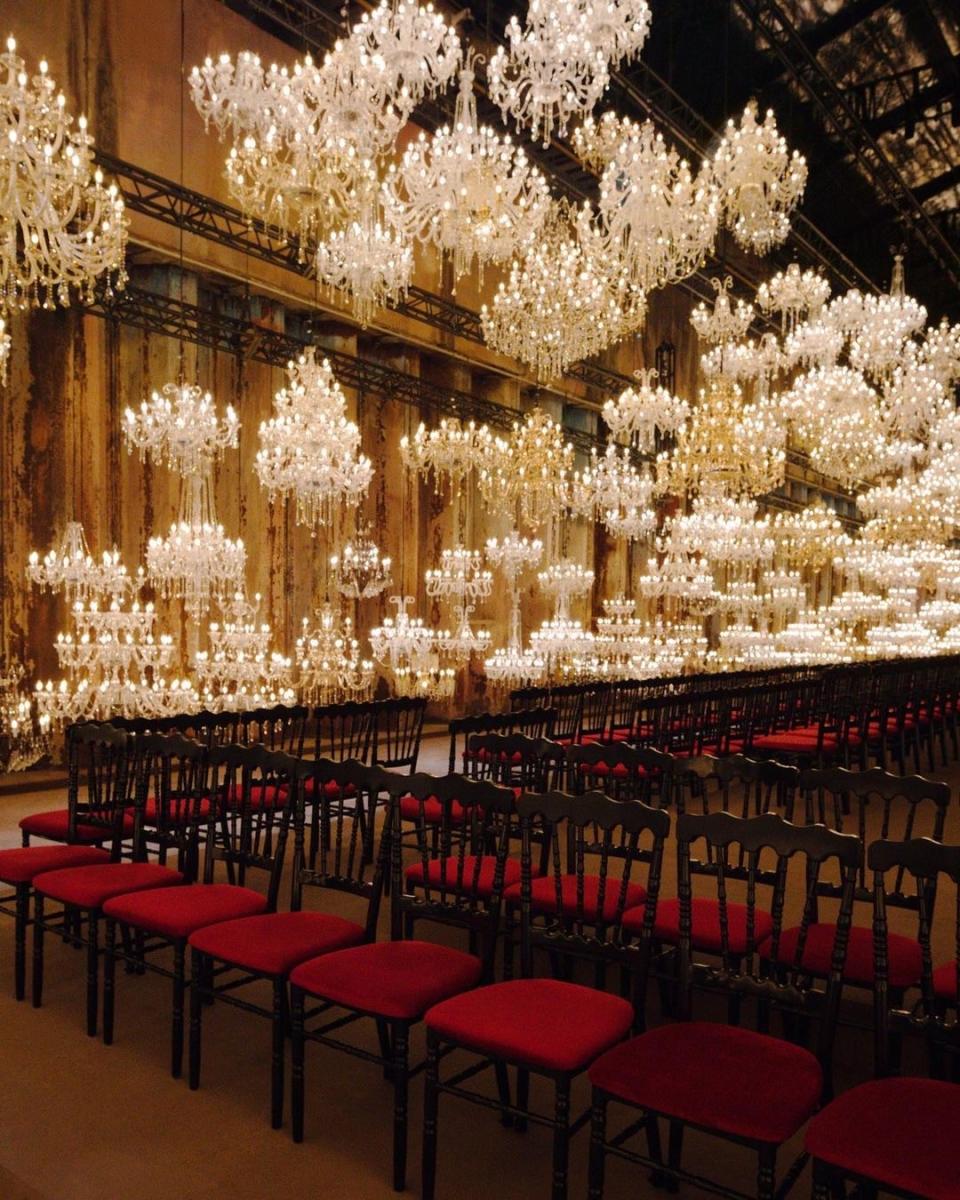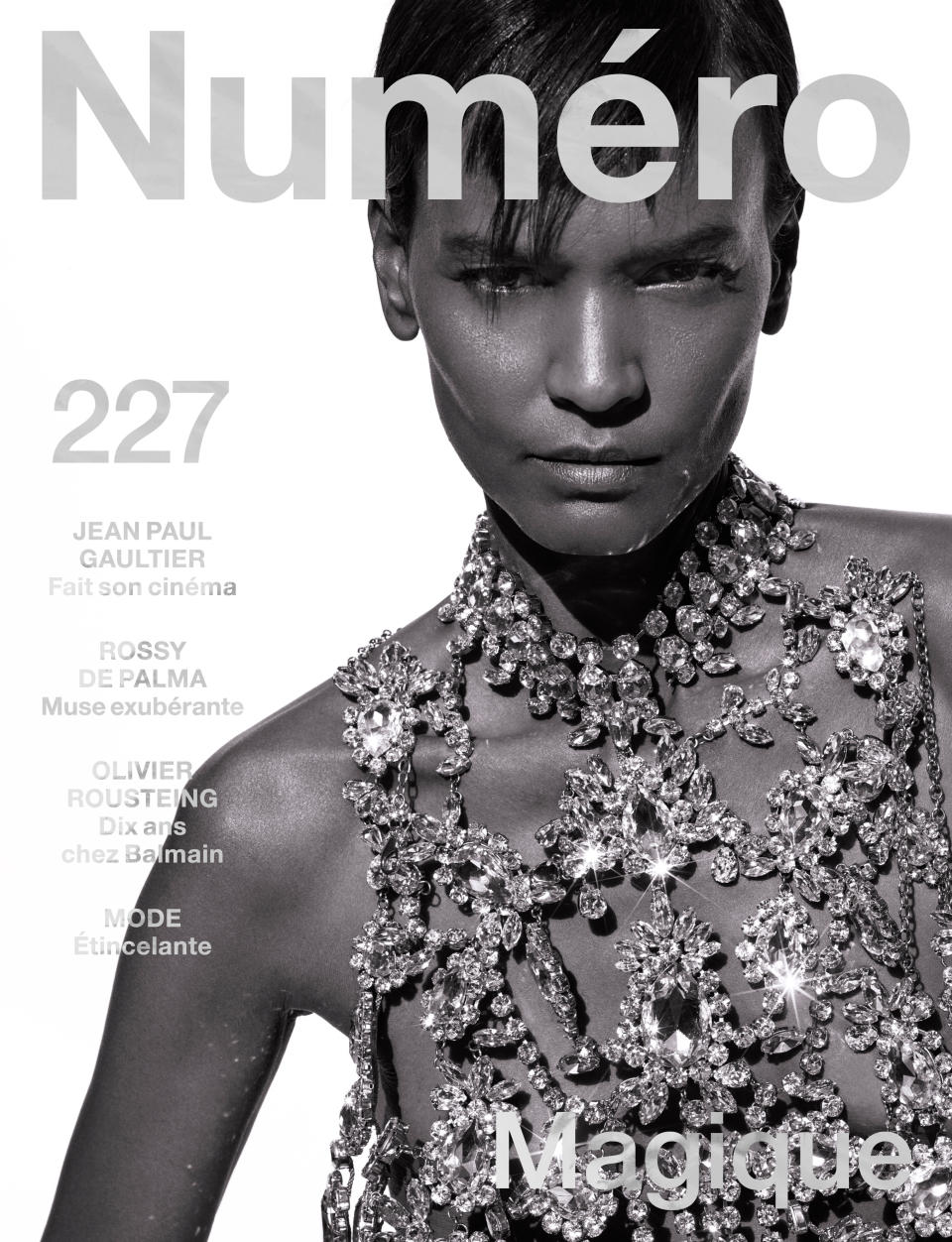Media People: Paul-Emmanuel Reiffers, Founder and CEO of Mazarine

PARIS — Cast an eye on the Paris fashion scene, and you’ll quickly realize that Paul-Emmanuel Reiffers has a finger in every pie.
The founder and chief executive officer of creative consulting firm Mazarine is active in every aspect of luxury and fashion, from advertising and content creation to technology solutions, design and packaging, event organizing, media and art.
More from WWD
The agency’s Mazarine Digital division offers services ranging from brand consulting to building e-commerce platforms and performance reporting. Meanwhile, event production arm La Mode en Images is behind some of the most spectacular runway shows in recent memory, with clients including Balenciaga, Louis Vuitton, Chanel and Valentino.
A fervent art collector, Reiffers also owns Numéro magazine and its spin-offs, Numéro Art and Numéro Homme; organizes exhibitions at his Studio des Acacias venue, and recently launched Reiffers Art Initiatives, a 500,000 euro annual fund designed to support emerging French artists and promote cultural diversity.
For its inaugural exhibition during the FIAC art fair in October, the foundation paired American artist Rashid Johnson with Kenny Dunkan, an artist from the island of Guadeloupe in the French West Indies, in a mentorship system that will be a blueprint for the project going forward.
Reiffers, 55, spent the first 15 years of his life in Ivory Coast. After returning to France, he made a splash while still studying at Paris-Sorbonne University by organizing conferences with politicians and businessmen, including luxury magnates Bernard Arnault and François Pinault.
In 1992, he wed Victoire de Castellane, who was working for Chanel at the time, giving him an early toehold in the world of fashion. Now separated, the two have three children together. Reiffers launched Mazarine in 1993, though starting a company during a global recession meant there were slim pickings at first.
“I was doing mock-ups, from the image to the printer, so I went from being a rock star [at university] to making catalogues. But it allowed me to cut my teeth, and to get a real feel for the business,” he recalled in an interview at the agency’s Paris headquarters, tucked into a side street behind the Arc de Triomphe.

Courtesy of Mazarine
Reiffers recently completed an overhaul of the office, which houses everyone from engineers to photographers, and is also investing heavily in expanding Mazarine’s U.S. and Chinese subsidiaries. With 400 employees worldwide, the group also has offices in New York City, Hong Kong, Shanghai and Beijing.
“We’re betting on a recovery, so we took advantage of this period to do everything we never have time to do, to organize, to structure the space, so that people afterward are happy to come back to the office. Workplaces nowadays have to offer better working conditions than home,” he said.
Reiffers told WWD how the agency has been coping with the disruption caused by the coronavirus pandemic, why he believes in international expansion, and how he’s betting on a combination of strong sector expertise with a holistic approach to come out on top.
WWD: How have you taken advantage of the period of upheaval to rethink what you’re doing ?
Paul-Emmanuel Reiffers: When everything’s going well, you always postpone what you don’t have the time and the energy to do.
After a period of shock of one month, when everyone was frozen, we quickly regrouped, because we’re entrepreneurs at heart and I’ve always been taught that it’s during periods of crisis that you build the future. You have to see it as an opportunity, not as a challenge. I created my agency from scratch. I was a student, and I founded it in the middle of the Gulf War. At the time, everyone was telling me that communications was over.
So I see it as a huge opportunity.
Mazarine is a digital group, a content creation agency, but it’s also La Mode en Images, which produces a lot of fashion shows, Numéro magazine, as well as a U.S. branch in New York City and an agency in China, so the priority was to retain all our talents — namely in event production, because we know that’s the hardest to rebuild.
Secondly, we pivoted to digital. We developed a lot of products and invested a lot in technology, because we’re a completely integrated digital development agency. We created products for fashion and luxury brands, namely the Smart Player, which allows users to watch a fashion show live and at the same time to interact with the content.
We also decided to renovate our offices, because they’re exceptional. Having 21,500 square feet on one level means that very little information gets lost. People are constantly crossing paths and collaborating. The idea was to modernize the space and to bring in more light. It allows us to recruit the best talents. We’ve created a café in the middle and it might not seem like much, but these days, you need to give people a reason to come to the office.
At the same time, we’ve grouped the events activities of La Mode en Images with Numéro magazine in a building on Rue du Cirque in central Paris that is totally dedicated to fashion, in order to create synergies in content production.
Thirdly, we’ve reorganized the management of the group. We’re integrating more people that work across divisions in order to create synergies. Today, it’s no longer about doing just events, or just digital. Brands require a global offer. They want to save time and deal with someone who handles media, content creation and event production, all at the same time.
WWD: You have a new executive vice president who joined last summer. Is that part of this new strategy?
P.E.R.: Absolutely, because our executive vice president Brune Buonomano is working across La Mode en Images and all of Mazarine’s content creation. We’re also going to offer the creation of dedicated content for brands during fashion week.
WWD: So it’s not necessarily a case of compensating for the decrease in physical events by ramping up digital content creation. In fact, everything is holistic.
P.E.R.: Absolutely. People are saying that physical events will disappear. That’s not true. These different activities will continue, but to varying degrees. The strength of the group is having people who are experts in their field. I don’t believe in having people who do a bit of everything, because our clients are designers, and marketing or communications directors, who want the best in their sector. It’s very difficult to be the best in every field. We have the best experts, and then we have people who liaise between all the departments and who have a global vision of the brand.
The other thing that sets us apart is that we’ve considerably reinforced our operations in the U.S. and China.
Our U.S. subsidiary was focused essentially on event production — for instance, working with Audemars Piguet on all their art events — and during confinement, it pivoted into a content production agency, producing campaigns, films and so forth. I love that about Americans, this capacity for very rapid transformation. It’s been hugely successful, because last year we had our biggest year to date.

Courtesy of Mazarine
WWD: Has the size of your team changed?
P.E.R.: Absolutely, because we also took advantage of this difficult period to say, OK, there are two markets that are thriving, so let’s invest a lot of time in the U.S. and China.
When you work on events, you know you don’t have to invest a lot because you work with a lot of freelancers. Event agencies usually have a fairly small staff. Content production, on the other hand, requires a bigger team. You can’t outsource artistic direction and development, so we’ve invested a lot.
The U.S. team has grown from eight people to 20 people. We’re winning a lot of accounts, it’s growing very fast.
WWD: You also recently acquired an agency in China.
P.E.R.: We tactically acquired a small agency because demand for events production in China has increased. It’s difficult for us to travel to China right now to recruit people, so faced with the growing workload, we bought a small agency called Twist of Parti Pris that was looking for a partner.
WWD: You have a pattern of acquiring companies in order to grow, such as Compagnie Financière Richemont’s advertising arm Ateliers ABC in 2004, La Mode en Images in 2010 and Numéro in 2014. You seem to have a building-blocks approach.
P.E.R.: You can’t be the best at everything.
My strength, my expertise, lies in image building for luxury brands and cultural institutions.
You have to be big, but not too big. Brands don’t want to deal with huge teams, but the agency has to be large enough to support increasingly ambitious projects. So I really believe in joining forces with agencies that have their own expertise, but all live under the same roof.
Generally, the companies choose me. It’s always done in a very respectful way.
We have a long-term vision and so empirically, we’ve bought companies and kept on people. Olivier Massart, the founder of La Mode en Images, is still there 12 years after the acquisition, and if I could, I would keep him forever. We offer them a strong brand, values, a work ethic, a state of mind, and generally, when they join us, they double their revenues.
When we need a complementary skill for a client, we save time by building a puzzle, and buying a complementary firm.
WWD: You’re always out and about during Paris Fashion Week, but contrary to its competitors, La Mode en Images does not have a very visible figurehead. Is that intentional?
P.E.R.: That may be about to change. La Mode en Images was ahead of its time, and its strategy over these last 10 years has been to be discreet. It’s a position that’s paid off, because we’ve had some really successful years. But today, we’re rethinking how the business operates.
There are advantages and disadvantages. Don’t forget, we work with designers. We work alongside them — everyone knows these fashion shows are coproductions.
It’s always a very delicate exercise to put the spotlight on anyone but the designer, and we’ve run into trouble in the past. When we produced the Yves Saint Laurent show for the soccer World Cup final [in 1998], it created a lot of bad blood with other brands.
Now we’re launching a new dynamic phase with the people we’re recruiting.
WWD: How do you see events organization evolving?
P.E.R.: I think we’re going to see a lot more events worldwide.
There will be some big events to generate buzz on social media, but more and more, there will be smaller events geared towards local audiences. That’s what I’m seeing everywhere today.
The cost of acquiring clients today is more complex, because you don’t have tourists coming to Paris and dropping huge amounts of money, so you have to develop more storytelling geared at local audiences in every country.

Courtesy of La Mode en Images
WWD: What impact do you anticipate from Chinese President Xi Jinping’s call for “common prosperity”?
P.E.R.: China’s complicated. For the time being, I think that everyone’s waiting for the [Communist Party Congress in 2022].
They want to increase the wealth of the middle class, which is good news for sectors like cosmetics. I think there are huge development prospects for all premium products. But it’s a very political process, so everything is very much controlled.
For the time being, China is closed and we have no idea when the borders will reopen.
WWD: What proportion of revenues do your various divisions account for?
P.E.R.: Today, it’s one-third events, one-third digital and one-third other activities like content creation, magazines and design, so it’s a relatively even split.
We have a design agency that makes packaging, which is a very classic activity that was a huge driver of growth during the lockdowns of the last two years. We weren’t expecting that. There are professions that you think are over — like production, publishing, print, beautiful objects — and suddenly, pow.
Our Paris office accounts for 70 percent of revenues, but the U.S. and China are growing fast. We have established the foundations there, and now we have to build on them.
The U.S. represents around 10 percent of our turnover, and has seen strong growth this year, while China is at 20 percent.
Our performance this year has been sharply impacted by the absence of events in the first half of the year. I hope to achieve revenues of 100 million euros to 110 million euros this year, compared with 148 million euros in 2019. I’m missing about 30 million euros of revenues from the events division.
WWD: It was brave of you to invest in a magazine, since print seems to be going out of fashion. How has Numéro fared during the pandemic?
P.E.R.: To me, Numéro is not just a media, it’s a brand.
I knew when I bought Numéro in 2014 that the traditional media sector was not on a growth path. But it was perfectly complementary with our activities. It’s connected us with a network of photographers and imagemakers, which has brought us a lot of added value over the past six years, and has also contributed to diversity.
I don’t consider myself a communications agency, I mean, we’re not advertisers. We’re like a luxury services brand for luxury brands, so having a magazine like Numéro that manages the biggest creatives, that has access to the top photographers and that is focused on this world, is one of the things that set us apart.
Since we launched the spin-off Numéro Art, which has given us access to the world’s leading artists, we’ve also seen how important these relationships are to fashion and luxury brands.
It puts us ahead of the pack and gives us a lot of legitimacy, especially in this sector, because we didn’t just suddenly get involved with art. We have an intrinsic and visceral knowledge of this sector, because we’re part of it.
Through Studio des Acacias, we’ve curated shows with artists, creating a whole ecosystem. We’ve also developed our digital activities in a big way over the last five years.
During the coronavirus pandemic, we realized that the brand was very powerful, because we had a lot of support from advertisers. Numéro is emerging from this crisis stronger. It’s even better than before, with everyone giving it their all.
Of course, our revenues were hit, but we realized that Numéro is important to fashion brands. Now that COVID-19 is over, we are moving on to a second phase. In the next two years, our priorities at Numéro will be investing in digital, native advertising and supplements.

Courtesy of Numéro
WWD: How many issues do you publish per year?
P.E.R.: There are eight women’s issues, two art issues and two men’s.
I launched the art edition five years ago, and it’s a huge success. Numéro Art does not carry the same weight as the women’s edition, but we have earned the respect of all the great artists, who routinely open their doors to us, which is very rare. We produce the best photo contents on all the artists. That’s why they like working with us. If you search for any artist on the internet today, if it’s an art world star, the first image that appears is from Numéro.
We also enjoy the support of all the leading institutions and advertisers.
WWD: Do you have international editions?
P.E.R.: We have editions in China, Japan, the Netherlands and Germany. The Chinese edition suffered during the pandemic, but fortunately it’s pulled through.
WWD: Did you close any editions during the pandemic?
P.E.R.: Yes, Russia.
WWD: Despite the loss of revenues, you have launched a fund to support young artists. Why was it important to you to devote resources to this venture?
P.E.R.: At the Studio des Acacias, we stage exhibitions with either artists or photographers, depending on our relationship with them, or what we feel like doing at the time. There was no clear artistic or editorial line.
When I was stuck at home in the middle of the pandemic, I asked myself, what is the point of it all? I needed to find a stronger meaning.
As an art collector, you can jump on a plane to New York City on a Saturday, see a gallery and come back on a Tuesday. It’s like being a golf fanatic. We share a passion that isn’t defined by money. Money matters, obviously, but at the end of the day, it’s about taste, choices and culture.
Traveling the world, I realized that French designers are recognized worldwide.
But French contemporary artists are not recognized. That’s why I created this foundation, which aims to support young French artists and promote cultural diversity. It’s something I’m deeply attached to, because I think the strength of France lies in the mix of cultures with very strong roots.
I’m French in spirit, but I was raised on the African continent for 15 years.
When I arrived in France, I brought my upbringing with me, which allowed me to have a different approach to things, which I’ve carried over into my work. In order to put the spotlight on these young talents, we came up with a concept: we’re tapping our network, built over 20 years, by asking a confirmed artist to mentor a young French artist for each edition.
WWD: How many works do you have in your private collection?
P.E.R.: Around 100.
WWD: And would you ever consider putting them on show in a permanent space?
P.E.R.: I’d like to create a space for the foundation eventually where we could show five or 10 years of emerging French artists alongside the foreign artists who supported them.
There has to be a meaning to it. I don’t just want to hang up beautiful paintings for my own pleasure.
I think you need to have a clear mission to stand out from the crowd. You know, when I created my agency, I thought, I’m going to focus on luxury and fashion, because it’s a small world. It’s better to be a big fish in a small pond than the other way around.
SEE ALSO:
Media People: Nick Knight Talks Image-making in the Digital Age
The Magazines That Are Yet to Make a Print Comeback
2021 Media Moves: Condé Nast’s New Chief Business Officer for Style and More
Sign up for WWD's Newsletter. For the latest news, follow us on Twitter, Facebook, and Instagram.

